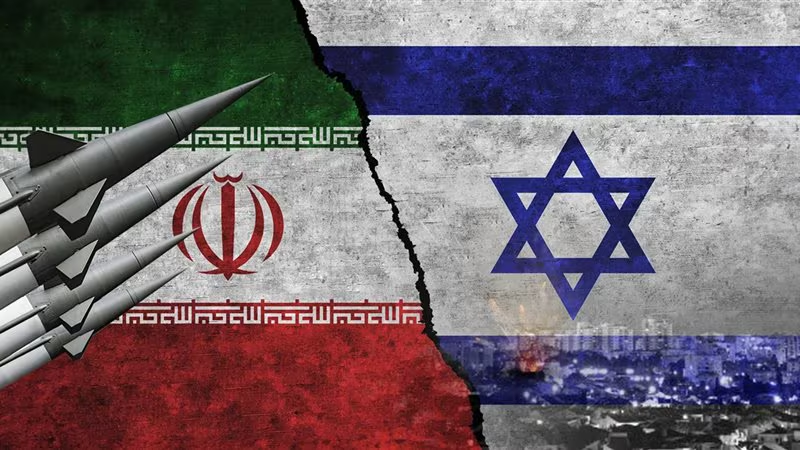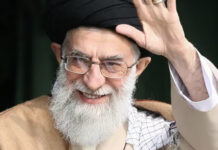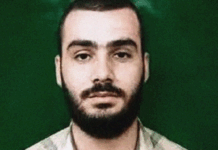Wstęp
Nowy rok 2025 rozpoczął się od bardzo niepokojącego komunikatu skierowanego do organów ścigania i agencji antyterrorystycznych, który odnowił obawy, że zagrożenie terrorystyczne w Stanach Zjednoczonych nie zmniejszyło się prawie ćwierć wieku po atakach z 11 września 2001 r.
Bardziej niepokojące jest to, że Federalne Biuro Śledcze (FBI) i Departament Bezpieczeństwa Krajowego USA (DHS) ostrzegają teraz przed możliwymi naśladowcami, zainspirowanymi przez atak ISIS staranowania pojazdem w Nowym Orleanie wczesnym rankiem Nowego Roku. Zapowiadają się również ataki odwetowe, ze względu na nieustanną atrakcyjność taranowania pojazdami jako taktyki dla aspirujących brutalnych ekstremistów. [1]
Zainspirowany przez Państwo Islamskie (ISIS) atak terrorystyczny w Nowym Orleanie pokazuje, że grupa ta nadal ma zdolność do wywierania wpływu i radykalizacji społeczności poza swoimi zwykłymi strefami operacyjnymi, dzięki skutecznym przekazom na platformach społecznościowych.
W 2024 r., przed atakiem w Nowym Orleanie, ISIS zorganizowało i zainspirowało kilka ataków w Europie, podkreślając raz jeszcze, że mimo malejącej obecności na Bliskim Wschodzie, rozwija się i ewoluuje gdzie indziej dzięki wykorzystywaniu konfliktów geopolitycznych i lokalnych zażaleń. Ośmieleni wydarzeniami w Syrii i Afganistanie, gdzie dwie grupy dżihadystyczne są teraz u władzy, duchowni dżihadu z siedzibą na Zachodzie coraz częściej korzystają z mediów społecznościowych, aby wyrazić swoje poparcie dla wdrażania szariatu lub wyrazić wrogość wobec kultur zachodnich. Ich treści przyczyniają się do radykalizacji społeczności muzułmańskich, zarówno imigrantów, jak i konwertytów, na Zachodzie.
Zarówno ISIS, jak i Al-Kaida kontynuowały w 2024 r. działalność online i w terenie, aktywnie dostosowując się do strat wśród swojego najwyższego przywództwa. Podczas gdy prawdziwa tożsamość piątego kalifa ISIS, Abu Hafsa Al-Kurasziego, pozostaje anonimowa, Al-Kaida nie wybrała jeszcze następcy swojego zabitego emira, Ajmana Al-Zawahiriego, mimo że minęło dwa i pół roku od czasu, gdy jego poprzednik zginął w ataku amerykańskiego drona w Kabulu w Afganistanie. Obie grupy w pewnym sensie funkcjonują jako rodzaj bezprzywódczego lub bezpostaciowego dżihadu, spełniając wezwanie ideologa dżihadu Abu Musaba al-Suriego do dżihadu jako „systemu, a nie organizacji”.
W Afryce ISIS systematycznie rozszerza swoje terytorialne zdobycze w nadziei na powtórzenie modelu kalifatu z 2014 r. ISIS kontynuuje ukierunkowane prześladowania afrykańskich chrześcijan w krajach takich jak Nigeria, Demokratyczna Republika Konga, Mozambik, Burkina Faso i Mali – jednocześnie nagłaśniając te czyny w Internecie jako część ogólnokontynentalnej kampanii terroru mającej na celu zarówno zastraszanie, jak i inspirowanie przemocy, trend, który niestety prawdopodobnie będziemy nadal obserwować w 2025 r. [2]
Oczekuje się, że Al-Kaida, powiązana z ruchem Al-Szabab, jeszcze bardziej nasili ataki w Somalii, zwłaszcza po powstaniu ISIS w stanie Puntland w północno-wschodniej Somalii, aby udowodnić swoją dominację. Urzędnicy obrony USA powiedzieli w czerwcu 2024 r., że Al-Szabab „anulował wszystkie” osiągnięcia sił rządowych w centralnej Somalii od czasu ofensywy w 2022 r. [3]
Ponadto Al-Szabab w Somalii, sojusznik Al-Kaidy w afrykańskim Sahelu, Grupa Wsparcia Islamu i Muzułmanów (GSIM) jest jedną z najszybciej rozwijających się grup dżihadystycznych, która prowadzi znaczącą działalność w Mali, Burkina Faso i Nigrze. Oczekuje się, że ten trend utrzyma się w 2025 r.
Dojście do władzy Haj’at Tahrir Al-Szam (HTS) w Syrii po upadku wspieranego przez Iran reżimu Assada budzi poważne obawy o przyszłość kraju. Ugrupowanie to ma przeszłość dżihadystyczną i jest powiązane z wieloma frakcjami terrorystycznymi oraz niektórymi radykalnymi duchownymi, którzy mają znaczny wpływ na bazę ludnościową HTS.
Znaki zapytania dotyczą również prawdziwych intencji przywódców HTS, ich powiązań z Turcją i tego, czy szczerze zamierzają porzucić swoje dżihadystyczne ambicje i czy poważnie skupiają się na odbudowie i wysiłkach na rzecz pojednania w Syrii. Przywódcy grupy ogłosili, że nie dążą do destabilizacji żadnego innego kraju ani nie służą jako bezpieczne schronienie dla terroryzmu.
Choć wpływy irańskiej Osi Oporu zostały drastycznie ograniczone dzięki izraelskim działaniom wojskowym i atakom powietrznym, jemeńscy Ansarallah (Huti) nadal stanowią poważne zagrożenie dla światowego transportu morskiego, mimo ataków lotniczych USA, Wielkiej Brytanii i Izraela.
[Ciąg dalszy tekstu – opis tych wydarzeń i ich konsekwencje, omówione w poniższym opracowaniu wraz z oceną wybranych wydarzeń w niektórych regionach od 2024 r. do połowy stycznia 2025 r. – nie jest spolszczony]
Jihadi Threat To West After New Orleans Attack
The attack in New Orleans on New Year’s Day 2025, whose perpetrator, U.S. Army veteran Shamsud Din Jabbar, left videos on his social media accounts[4] documenting his pledge of alliance to the Islamic State (ISIS) is the first attack in the United States since 2017.[5]
The last known ISIS-inspired attack in the U.S. was the truck attack in New York City on October 31, 2017, when Sayfullo Habibullaevic Saipov, an Uzbek national who had emigrated to the U.S. in 2010, drove a pickup truck into people on a bike path along the Hudson River. U.S. investigators found documents inside the truck suggesting Saipov had an allegiance to ISIS.[6] His attack killed 8 people and injured 12 others.
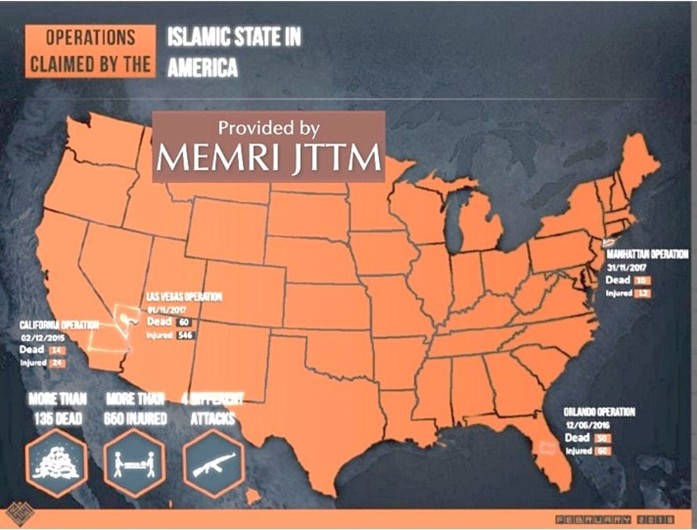
ISIS Reaction To New Orleans Attack
Although ISIS did not claim the New Orleans attack, its official weekly newsletter, Al-Naba’, featured an editorial titled: „We were there,” celebrating the attack, seeming to confirm that the perpetrator, Jabbar, was inspired by the group’s ideology even if he had no formal ties with the group[7].
The editorial, which was published ten days after the attack, made a point of clarifying why it took ISIS so long to comment on the attack, saying the group has certain criteria which guide its issue of claims of responsibility.
It noted: „The Islamic State is not eager – as some think – to claim responsibility for every attack that occurs in the world, even if the attack takes place according to its way and methodology, or even if it comes as the fruit of its incitement, or more than that!”
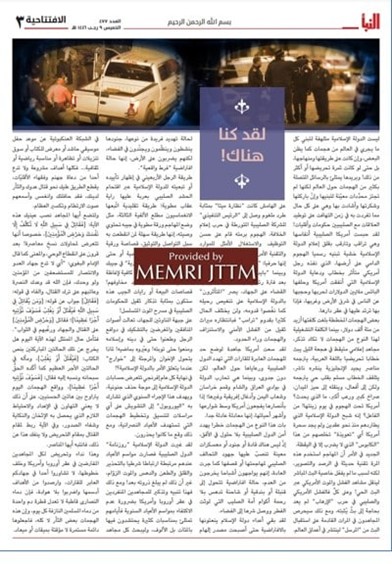
The editorial stressed that the perpetrator of the New Orleans attack – whom it declined to name – was inspired by the group’s messaging. The piece further stressed that such attacks continue to be „a danger which threatens the security of Crusader countries without a solution on the horizon,” signaling its plans to direct, or inspire, similar attacks beyond its usual operational zones, and beyond Europe – which in 2024 experienced ISIS plots and attacks including Russia,[8] Switzerland,[9] Germany,[10] and Austria.[11]
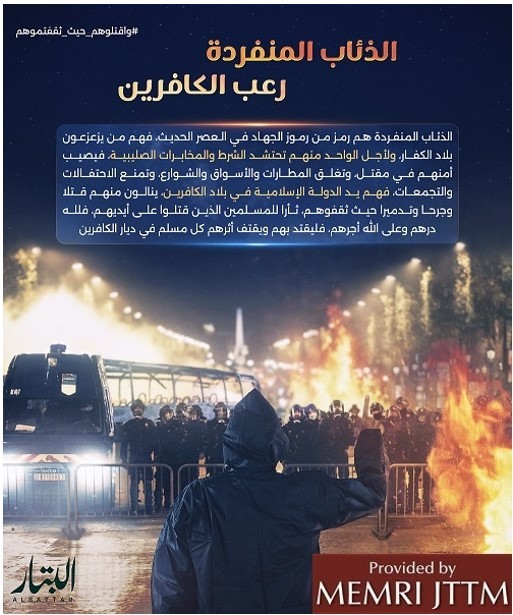
ISIS’s Ongoing Online Campaign
The New Orleans attack was the fruit of a long-simmering online campaign aimed at inciting lone wolves in the West. Exploiting the Hamas-Israeli conflict, ISIS, despite its enmity towards Iran-backed Hamas, has flooded the internet with praise for the killings of Jews and their Crusaders allies,[12] building on the anti-Israel protests around the world to inspire attacks by ISIS supporters in the West.[13]
The campaign intensified its call to conduct attacks in the West, following an audio message by the spokesman of the group, Abu Hudhayfah al-Ansari, who urged supporters around the world to target Jews and their Christian allies everywhere, especially in the streets of Europe and America, in revenge for the suffering of Muslims in Palestine.[14]
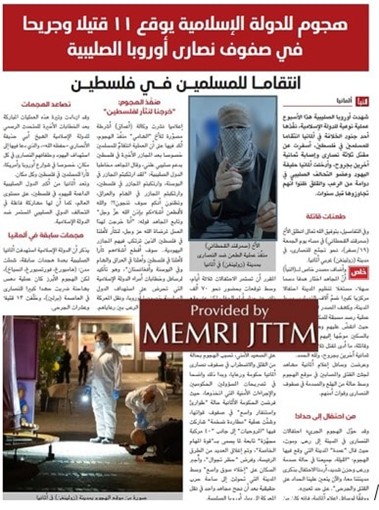
Over the past year, MEMRI JTTM has documented a wide range of content released by ISIS officials[15] and supportive entities which urge supporters and potential recruits to act on ISIS’s behalf.[16]
The ongoing anti-Israel protests in the U.S., coupled with the border crisis, have contributed to a state of elevated threat. Security officials anticipate the threat level to remain high in the coming year, in part because of illegal migrants to the United States who have ties to terrorism, such as the case of 22-year-old Mauritanian Sidi Mohamed Abdallahi, who was found dead in an apparent suicide by hanging after he reportedly shot and wounded an Orthodox Jewish man near a synagogue in West Rogers Park, Illinois, while shouting „Allah Akbar.”[17]
California Wildfires Inspire ISIS
Law enforcement and counterterrorism agencies should be on the watch for possible arsons mirroring the California wildfires which have been a source of inspiration for ISIS.
On January 16, 2024, the Islamic State (ISIS) released issue 478 of its weekly newsletter, Al-Naba’. „This scene of chaos and loss of control is an inspiring operational opportunity to launch or prepare for attacks,” it wrote, adding, „All you have to do is go on a 'camping trip’ to one of the forests near residential neighborhoods, then set a fire and withdraw quietly.”
The issue’s feature article interpreted the California wildfires as being „divine punishment” for the U.S., inciting supporters residing in America to start more fires near residential neighborhoods.
Separately, the newsletter published a stark infographic advocating acts of violence, arson, and destruction, particularly targeting groups identified as „infidels.”[18]
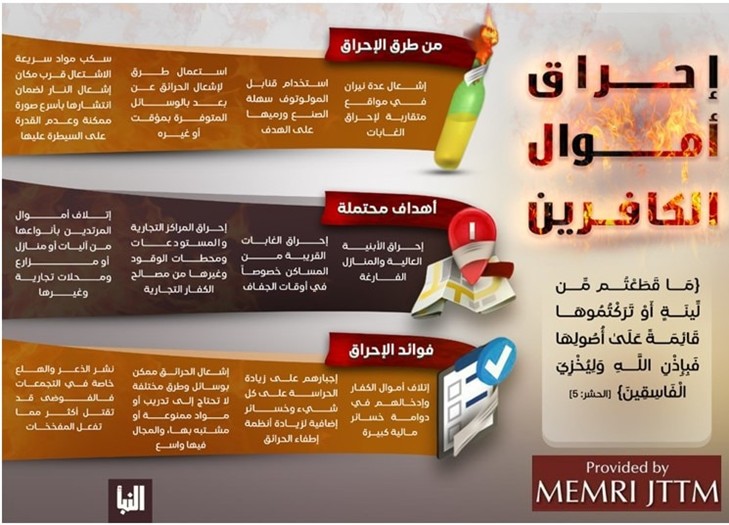
ISKP And Its Media Arm Target Western Jihadis
The attack in New Orleans brings the focus again to the group’s branch in Afghanistan: Islamic State Khorasan Province (ISKP). This group is believed to be acting as the external arm that supervises its operations in the West.
While ISIS’s core claimed responsibility for attacks in 2024 in Russia, Turkey, and Iran, local authorities claimed that ISKP was the one which oversaw the planning.[19] ISKP is also behind recruiting Nasir Ahmad Tawhedi, an Afghan citizen residing in Oklahoma City, who plotted a terrorist attack in the U.S. for 2024’s November presidential election day and luckily was arrested in October.[20]
ISKP’s semi-official Al-Azaim Media Foundation releases a wide range of content, such as magazines, videos, audio statements, books, and newsletters.
The media group’s flagship magazine, Voice of Khorasan, is published in multiple languages, including English, Pashto, Dari, Urdu, Tajik, Bengali, Hindi, Russian, and occasionally in Tamil, Malayalam, and Uyghur, aiming to reach a broad audience, both regionally and internationally. Through its multi-language publications, Al-Azaim aims at globalizing local grievances among Western audiences, often framing countries such as the U.S. as an enemy of Islam.
Al-Azaim’s publications employ ISKP’s sophisticated use of media as a tool to sway public opinion, recruit members, and justify their terrorist attacks under a religious or ideological pretext.
Ten days after the New Orleans attack, Al-Azaim released an English-language poster titled „Don’t Wait!” Depicting a hand holding a pistol, its text reads: „Don’t wait for a new year to take action!” The poster lists ten public events to be held during 2025 in various European countries and the U.S., suggesting them as targets:
Vienna Ball Season (January 10-March 1, Vienna, Austria)
Venice Carnival (February 22-March 4, Venice, Italy)
St. Patrick’s Day Parade (March 17, Galway, Ireland)
The Cannes Film Festival (May 13-24, Cannes, France)
Glastonbury Festival (June 25-29, Glastonbury, England)
100th Annual Chincoteague Pony Swim (June 27-28, Chincoteague Island, Virginia)
San Fermin Festival (July 6-14, Pamplona, Spain)
Oktoberfest (September 20-October 5, Munich, Germany)
Amsterdam Dance Event (October 22-26, Amsterdam, Netherlands)
Grand Ole Opry’s 100th Anniversary (November 28, Nashville, Tennessee)
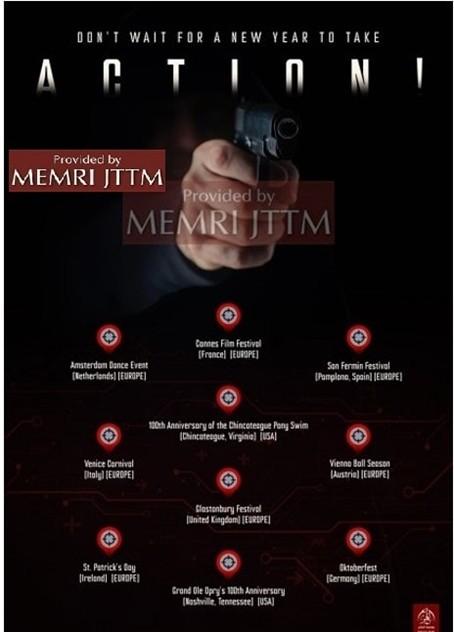
Jihadi Clerics In The West
In 2025, Western-based jihadi clerics will continue to promote radical ideologies supportive of ISIS or other terrorist organizations, by feeding into the jihadi narrative of these groups, without naming them, to avoid legal accountability.
For example, in early 2025, the Michigan-based cleric, Ahmad Jibril, who appears to be emboldened by HTS’s takeover of Syria, posted a video in which he urged HTS to implement Islamic laws immediately, arguing that a „gradual implementation” is forbidden. He also posted a second video in which he urged the global Muslim community to act decisively and collectively in defense of their „sisters” and all captives, as their imprisonment should „ignite the collective responsibility of the collective Ummah [nation].”[21]
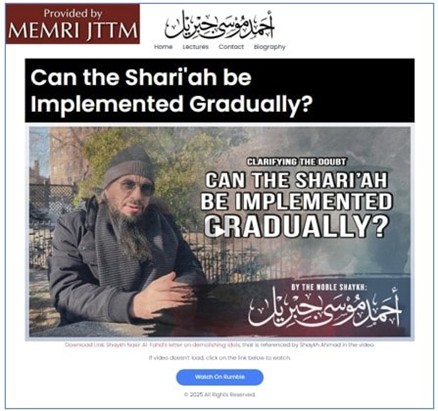
This sentiment is often echoed by other jihadi clerics in the West, such as Ottawa, Canada-based Tariq Abdulhaleem[22] or Wissam Hadad, aka Abu Ousayd,[23] who is based in Sydney, Australia.
As an example of their radicalizing efforts, these clerics often call on Muslims to rejoice in natural disasters in Europe and America. They have justified the wildfires in Los Angeles by claiming that they are „divine punishment” on the United States for its alleged support of the Israeli „holocaust” in Gaza.[24]
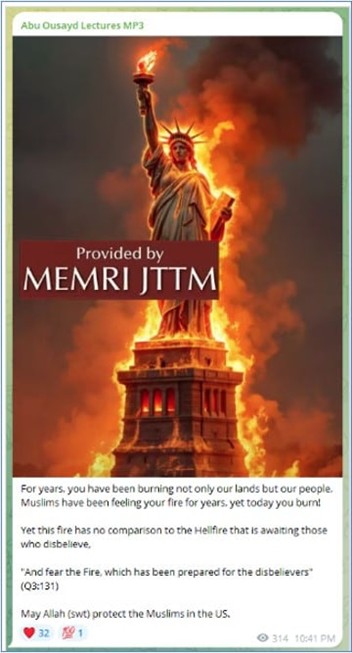
Post-Assad Syria
The year 2024 ended with a new government in Syria: the Assad regime fell. The country is now testing a new authority, headed by Ahmed Al-Sharaa, a man who just few weeks before was known as Abu Muhammad Al-Joulani, the leader of Hay’at Tahrir Al-Sham (HTS) which was based in and dominated rebel-held Idlib governorate in Syria.
The man who was once was a senior member of the Islamic State (ISIS) and Al-Qaeda is now trying to soften his image and reassure religious minorities and the international community about his future reign in Syria, claiming that he will govern the country with an inclusive and moderate Islamic model. Al-Sharaa has shown rare political skills, successively breaking with his allies in ISIS (in 2013) and Al-Qaeda (in 2016) and overcoming efforts by both groups to destroy him and his movement.
Will this reality hold through March 2025, when the term of the HTS-formed caretaker government ends? Will Al-Sharaa succeed in securing a stable Syria? And will his strategic interests trump his jihadi ideology?
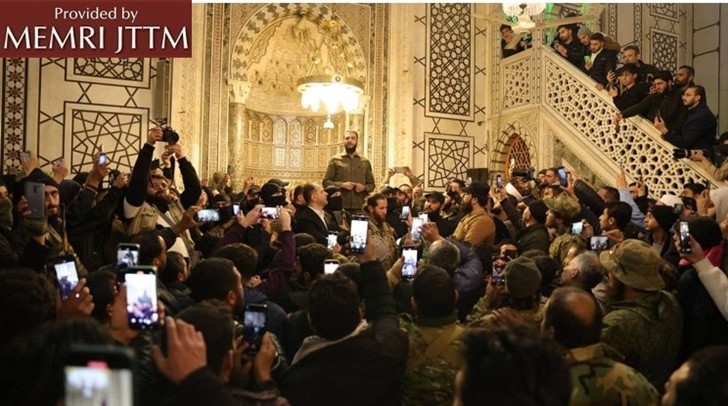
Jihadi Or Statesman?
While the coming months will be decisive in shaping a clearer picture of Al-Sharaa’s future, one should also remember that a man’s character is the sum of his past actions.
In this regard, MEMRI JTTM has been documenting the jihadi journey of HTS and its leader since its founding in 2016[25] and before.[26]
This includes Al-Sharaa’s past praise for attacks carried out by Arab Israelis on Jews,[27] his vow to establish an Islamic emirate in Syria,[28] his pledge of allegiance to the late leader of Al-Qaeda Ayman Al-Zawahiri,[29] and many similar milestones in his jihadi career.[30]
Foreign Jihadi Groups in Syria
Over the past ten years, the man who is now attempting to rebrand himself as a moderate, had turned his stronghold in Idlib and surrounding areas into haven for foreign jihadis that aligned with the HTS organization.
These groups, which took part in the military campaign that ousted the Assad regime, are designated by the U.S. as terrorist groups. These include the Turkistan Islamic Party, Mujahideen Ghuroba Division, Kiwa Al-Mujahideen wal Ansar, Ansar Al-Tawhid, Ansar Al-Islam, Kataib Imam Al-Bukhari, Xhemati Alban, and Ajnad Al-Kavkaz.
Following Washington’s decision to withdraw a $10 million reward it had offered for his capture, Al-Joulani told U.S. diplomats that he is committed to ensuring that terrorist groups in Syria do not pose a threat to the U.S. and its allies.
However, removing HTS from Washington’s terrorist list is another development that may require the HTS leader to break away from these foreign jihadi groups in the same way he broke away from the ISIS in April 2013 and from Al-Qaeda in July 2016. On January 14, 2025, HTS was quick to arrest Egyptian Jihadist Ahmad Al-Mansour who had made a video from Syria announcing a new effort to overthrow the current Egyptian regime of Abdul Fattah El-Sisi.[31]
Continuing along this path should not be too difficult a decision to make for the HTS leader, who spent the last few years in Idlib, silencing his jihadi critics and rivals by pressure or force, including some of his loyalists, who were killed in unusual ways. One recent example is the Iraqi-born Abu Maria Al-Qahatani, the sharia official who was killed in a guesthouse in the city of Sarmada in Idlib to which he had been invited; three people entered and gifted him a sword in a box rigged with explosives, which detonated when he opened it.
Al-Qahtani’s assassination came just one month after HTS had released him following a seven-month-long detention on charges of collaborating with foreign parties.[32]
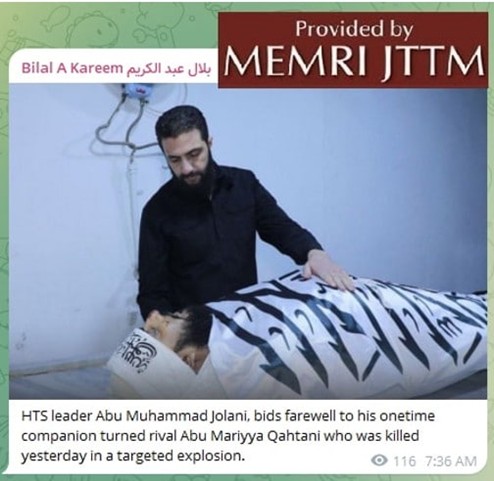
Al-Joulani was also accused of tipping off the Russian Air Force which on December 11, 2021, attacked the house of Chechen jihadi commander Muslim Al-Shishani in the Al-Ya’qoubiah village west of Idlib. The attack occurred a few weeks after Al-Shishani was banished by HTS from the Idlib area for refusing to operate under the HTS banner.[33]
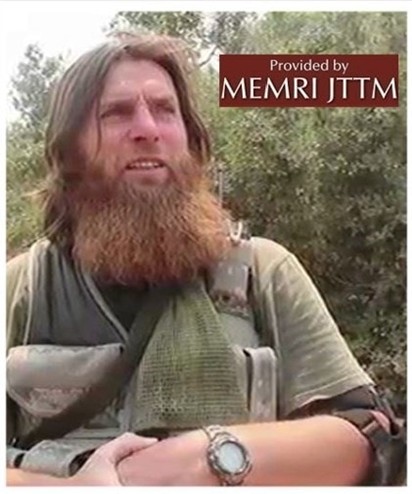
Sectarian Violence
For decades, Syria’s population, which is predominantly Arab Sunni Muslim, have been holding grudges against the Alawites, a heterodox Shi’ite sect to which the ousted Bashar Al-Assad belongs and which was heavily represented in the Assad regime’s key military and intelligence units.
A related challenge is the risk of large-scale revenge attacks, which could trigger cycles of sectarian violence. Recent videos show the burning of Hafez al-Assad’s grave in Qardaha and attacks on Alawites’ sacred sites and homes. These attacks create growing concern, particularly given that many Alawites are still armed.[34]
The newly announced „Syrian Resistance” group, which claimed attacks against HTS-backed forces in the cities of Aleppo and Manbij, in collaboration with „friendly forces,” could be the seed of an anti-HTS armed sectarian opposition that Tehran could use to ignite strife.[35]
Syrian Democratic Forces (SDF) And Turkey
Following the fall of Assad, Ankara has repeatedly insisted that the People’s Protection Units (YPG), the leading force within the Kurdish U.S.-backed Syrian Democratic Forces (SDF), must disband, asserting that the group, which it considers an extension of the leftist terrorist PKK, has no place in Syria’s future.
Addressing this issue, the HTS leader stated in an interview with Saudi-funded Al-Arabiya Television that Syria would not allow attacks against Turkey from groups like the PKK and vowed that weapons should only be held by the state. Even though he expressed openness to negotiating with the SDF, to reach a peaceful resolution, his commitment to Turkey is part of a debt he owes to Ankara, who has been major support of anti-Assad opposition over the years. „I hope Syria does not forget [Turkey’s] kindness,” he told the Turkish newspaper, Yeni Safak.
As part of paying back the debt, news reports suggested that the HTS leader would allow Turkey to establish new military bases in Syria as part of a defense agreement which could lay the groundwork for a Turkish military assault to neutralize the American-supported SDF.[36]
ISIS Eying Detention Camps
Despite the collapse of its pseudo-caliphate in Syria and Iraq, ISIS continues to have a presence in eastern Syria. Its affiliates continue to operate covertly as sleeper cells claiming responsibility for attacks against the SDF.
Since the launch of the Hay’at Tahrir Al-Sham (HTS)-led military campaign on November 27, 2024, in mid-January 2025, ISIS in Syria had claimed responsibility for 13 attacks on SDF elements in drive-by shootings and armed assaults on checkpoints and outposts, killing 10 and wounding several. This indicates that the new dynamics in the country have not impacted its stream of attacks on the SDF in the Deir Al-Zour and Al-Hasakah Governorates.[37]
ISIS has repeatedly proven adept at exploiting these power vacuums, using the opportunity to recruit and recuperate. Aside from its operational cells, thousands of its fighters and their families remain in detention centers and refugee camps in northern Syria, including foreign nationals who had travelled to Syria for jihad.
Further, the growing tensions between the Kurds and Turkish-backed faction pose a significant threat, as these detainees could rejoin ISIS if the SDF were to collapse, or if ISIS exploited the situation to carry out a prison break, as it did several times in the past.[38]
The Fate Of Religious Minorities
While the HTS leader promised to respect all ethnic and religious minorities under its rule, human rights watchers should remember that until HTS launched its military campaign against Assad, the organization faced waves of civilian protests, joined by key jihadi and rebel figures, calling for the removal of HTS’s security apparatus which they accused of injustice and corruption, freeing prisoners, and above all – a demand for Al-Joulani to step down.[39]
It will be interesting to see if the HTS leader can keep his promise and appease jihadi clerics, who already criticized his local authority in Hama, for allowing Christians there to raise a cross on a Christmas tree erected in the town center.[40]
Local reports said that Uzbek fighters aligned with HTS had torched the tree on Christmas Eve, which triggered protests, some of them allegedly armed, by Christians in Hama and Damascus.[41]
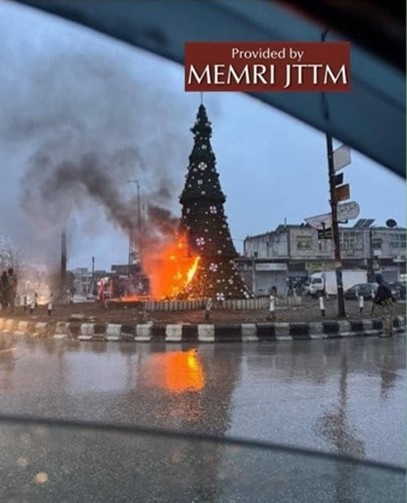
Fears For Women’s Rights
HTS will likely not be implementing restrictions on women’s education, employment, and media freedom – at least not as harsh as those imposed by the Afghan Taliban when they took over Afghanistan following the U.S. withdrawal in 2021. After all, HTS allowed women to pursue education in schools and at Idlib University before HTS moved to take power in Damascus.
However, in its Idlib-governance model, the group did enforce a strict dress code, requiring women to wear conservative attire, such as the niqab, in public. Furthermore, it did not allow women to travel without a male guardian.
And while optimists like to cite HTS leader’s meetings with women who were not wearing a hair cover, or hijab, as a signal of his pragmatic approach to women’s liberties, they also seem to ignore the fact that he told a young woman who wanted to take a selfie with him to cover her hair. Additionally, the statements of HTS’s-appointed Head of Women’s Affairs, Aisha Al-Debs, cast doubts on the future of women’s liberties.[42]
Speaking to Turkey’s state-run TRT broadcaster, she said that only feminist organizations that „support the model that we are going to build” would be welcome in Syria, adding that she will not open a path for those who do not agree with her thinking.

More troubling were the statements made by the spokesman of the HTS-backed government, Obaida Arnaout, who said in an interview on Lebanon’s Al-Jadeed TV, that women are unable to play certain roles in society due to their „biological, psychological and mental characteristics.”[43]
He further elaborated that „with regard to the representation of women in government and in parliament, we believe that it is too early [to discuss this], and that it must be left to the jurists and constitutional scholars, who will examine the structure of the new Syrian state. Women are important and deserve respect, and for this reason the roles must be suitable for women…”
Regarding wearing the hijab, Arnaout said: „There will be no coercion [to wear the hijab] among Christian women or among any other denomination.”
He noted that women deserve education in all fields, but that „the relevant elements must discuss and assess their appointment as judges…Women have biological, psychological and mental characteristics that must be taken into consideration in the context of particular positions and roles.”
Iran’s Axis Of Resistance
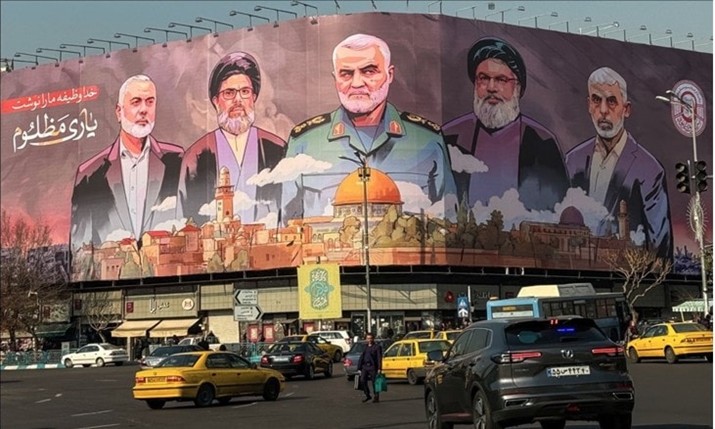
The Israeli military campaign that was launched in response to the October 7, 2023, attack by Hamas has tremendously weakened Iran’s Axis of Resistance, which is composed of Hamas in Gaza, Lebanon’s Hizbullah, the Assad regime in Syria, militia groups in Iraq, and the Yemen-based Houthis.
In 2024, the network suffered significant blows, particularly among Hamas and Hizbullah leadership ranks, including Hizbullah’s longtime leader Hassan Nasrallah,[44] Hamas’s Yahya Sinwar,[45] and Ismael Haniyeh.[46]
Following these heavy losses, Iran was forced to make concessions, such as agreeing to support Hizbullah’s ceasefire agreement in Lebanon with Israel.[47]
Yet watching the collapse of the Assad regime in Syria was the hardest blow so far for Tehran, as it disintegrated the „unity of its fronts,” a slogan which Tehran repeated use to demonstrate the unity, and geographic continuity, among its regional proxies against Israel and the U.S.
With the fall of the Assad regime, Tehran has lost the ability to rearm Hizbullah by using Syria as an air and land bridge to Lebanon. However, while it searches for a way to recover from the Syria shock, the Iranian leadership continues assert that the Axis of Resistance remains resilient, as demonstrated by Iran’s security chief, Ali Akbar Ahmadian, who hinted that Teheran always keeps a few tricks up in her sleeve.[48]
In what could be a signal of Iran’s new engagement in Syria, the secretary of Iran’s Supreme National Security Council, Ahmadian, said: „With the occupation of Syrian territories by the Zionist regime, a new resistance has been born that will manifest itself in the years to come,” according to a report by the IRNA news agency. [49]
It is quite a coincidence that his statement was made on the same day that a new group calling itself the „Syrian Resistance” began claiming attacks on HTS-backed security forces, particularly in the Syrian coastal region, much of whose rural population belongs to the Shi’ite Alawite sect.[50]
Hamas
Hamas’s military structure has been significantly weakened. A large percentage of its fighters and senior leaders have been killed, and their rocket capabilities have been severely diminished.
Nevertheless, the group still retains some operational capability against Israeli forces in the Gaza Strip. Aside from its military capabilities, Hamas’s political influence has not been eliminated due to the lack of a strong alternative governance in Gaza. Yet the group will likely lose political support and face difficulties in reorganizing amid growing public dissent by civilian Gazans because of the war.[51]
Lebanese Hizbullah
In Lebanon, despite its military defeat, Hizbullah continues to exercise its political influence over the Lebanese state and has avoided disarming its military wing as required by the ceasefire agreement that it signed with Tel Aviv on November 27, 2024. According to the agreement, the Lebanese Army must confiscate or dismantle all of Hizbullah’s weapons and infrastructure south of the Litani River. As of mid-January 2025, the Lebanese army had not announced the confiscation of any weapon owned by Hizbullah.
With Israel’s determination to enforce the ceasefire agreement fully, to ensure the safe return of Israelis residents to their homes in the north, Hizbullah’s violations of this ceasefire condition could push Tel Aviv to resume its open war against the group, a war which Hizbullah, after its heavy losses in leadership, regional allies, and resources can no longer afford, especially without strong support lines from Iran through Syria.[52]
Hizbullah is also facing pressure from opposition parties. This could create a shift in the balance of power in Lebanon, as evidenced by parliament’s successful attempt to elect a president for the country – a post that has been vacant for two years.
The elections of U.S.- and Saudi-backed Gen. Joseph Aoun as the new President of Lebanon reflects a shift in Lebanon’s power balance, since Hizbullah- which had exercised sway over the political scene for decades- emerged badly battered from the war with Israel. [53]
Right after his election, Lebanon’s new president, who commanded the Lebanese Armed Forces since 2017, pledged to exercise the state’s exclusive authority over all weapons in the country. While most of the members of the Lebanese parliament burst into applause in agreement with his remarks, Hizbullah MPs sat still.[54]
In another major blow to Hizbullah, which wanted its ally, caretaker Prime Minister Najib Mikati to stay in his position, Lebanese lawmakers voted for Nawaf Salam, head of the International Court of Justice, to designate him as a prime minister.[55] Salam has subsequently sought to reassure Hizbullah of his good will towards the organization.
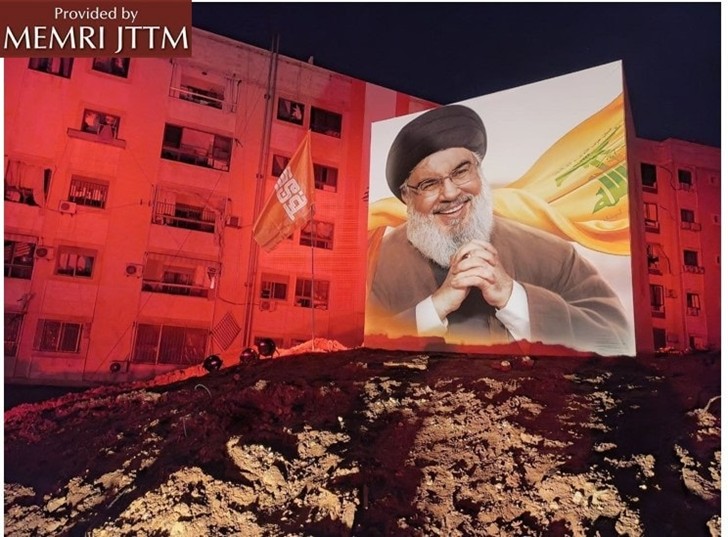
Iraqi Militias
The division within Iraq’s Shi’ite political factions over post-Assad Syria reflects a broader shift in alliances that could draw Iran-backed groups in Iraq.[56]
The Iraqi government appears to be cautious, yet willing, to establish ties with HTS, as evidenced by developments in late 2024, including sending an official delegation to meet with HTS leader in Damascus.[57]
However, Iran-backed militias oppose this shift, fearing it could weaken their leverage politically in Iraq while paving the way for an anti-Iran and pro-U.S. political model to replace the Tehran-aligned regime that has been in power since the toppling of Saddam Hussein in 2003.
If Baghdad moves closer to normalization with Damascus, the future of these militias, which maintained a military presence in Syria during the Assad regime, hangs in the balance. Washington continues to pressure Baghdad to disarm and defund them. This pressure will likely increase with the arrival of President-elect Donald Trump’s administration to the Oval Office.
Since the toppling of Assad, the militias, which withdrew back to the Iraqi borders, were now trying to justify their refusal to bring all paramilitary forces under the authority of the Iraqi army by highlighting their essential role in Iraq’s security, particularly with the mounting concerns in Iraq over ISIS’s resurgence in Syria after HTS assumed control.[58]
In the meantime, HTS’s actions towards the Shi’ites of Syria and their sacred sites, namely the Sayyida Zaynab shrine in Damascus, could either empower the Iraqi government to further restrain these militias from meddling in Syria, or provide an excuse for these militias to intervene under the pretext of defending the Shi’ites[59] and these sites.[60]
Observers speculate that the recent visit of Iraqi PM Mohammad Shia Al-Sudani to Teheran, and his meeting with Iran’s Supreme Leader, Ali Khamenei, was in line with Baghdad’s effort to dissolve the militias to shield them from potential strikes by the United States and Israel.[61]
However, the outcome of the visit does not sound promising. Khamenei posted on X that the Popular Mobilization Units (PMU), that is, the militia, was a „crucial component of power in Iraq, and more efforts should be made to preserve and strengthen it.”[62]

Khamenei’s post on X following Al-Sudani’s visit to Teheran.
Yemen’s Houthis
While Tehran’s influence in the rest of the region seems severely compromised, the activity of one proxy, Yemen’s Ansarallah (Houthis) remain undeterred.[63] Two days after the Israeli Air Force struck Houthi targets in Yemen, the Houthis said that they had carried out attacks on a U.S. aircraft carrier in Red Sea, and claimed four drone attacks on Israel.
Unlike Hamas and Hizbullah or even the Iraqi militias, the Houthis pose an exceptional security challenge because of the geographical distance that separates them from Israel, and accordingly, the latter’s lack of intelligence on the group, including its leadership. The Houthis also have a much larger population base than their counterparts in Gaza or Lebanon, and are led by an extremely ideologically motivated leadership with dreams of grandeur.
Israeli retaliatory airstrikes, which targeted the Houthi infrastructure, seem to have only increased domestic support for the group[64] and failed to halt the Houthi missile attacks on Israeli targets almost on a daily basis. Similarly, American and British airstrikes on Houthis have failed to dent the group’s hostilities against commercial ships in the Red Sea.
With the diminishing power of Hizbullah and Hamas, Houthis are now enjoying popular support from a wide range of Arab people who perceive the Houthi attacks against Israel and against global maritime shipping as the only source of support for the people of Gaza.[65]
The threat forecast for the Houthis in 2025 includes ongoing maritime disruptions, potential for increased military engagements, and economic impacts on global trade – all while potentially gaining more weaponry or support from external actors, such as Iran.
Africa
In recent years, Africa has emerged as a global epicenter of jihadi threats, with four branches from the Islamic State ensuring that the group’s „enduring and expanding” slogan is still valid.
These affiliates are: Islamic State West Africa Province, Islamic State Central Africa Province, Islamic State Mozambique Province, and Islamic State Sahel Province.
Over the past year, the Islamic State has escalated its operational activities in Africa, including recruitment and resource extraction. Perhaps the recent video which the group branch in West Africa released just before the end of 2024 represents the group’s fruitful efforts in recruiting and training young fighters, including children, who carried out executions.[66]
An image taken from ISWAP’s 29-minute video in Arabic, titled: „The Empowerment Generation – Part 2 (Telegram, December 20, 2024).
A breakdown of the group’s attacks in 2024 suggests that their threats against Christians in Nigeria, the Democratic Republic of the Congo (DRC), Mozambique, Cameroon, and Mali are on an upward trajectory that would likely continue in 2025 – unless significant changes are made in local and international efforts to counter ISIS.
The extensive photo documentation of the hostilities against Christians also suggests that the group is seeking to spread fear among locals, while showing the world its expanding operational influence on the African continent. Killing African Christians also serves as a convenient propaganda substitute for the group’s relative inability to successfully target people in the “infidel” West.
MEMRI JTTM monitoring shows that from January to December 2024, these affiliates claimed responsibility for killing at least 994 African Christians. The highest number of fatalities were in Congo, which falls within ISCAP’s operational zone.
Out of the 994 African Christians who were killed in 2024, 913 of them were killed by ISCAP, compared to 31 killed by ISWAP, 46 killed by the Islamic State Mozambique Province, and four killed by Islamic State Sahel Province.
African Sahel
Despite significant blows to its leadership, Al-Qaeda continues to seek ways to strengthen its solid presence in two regions: Somalia and the African Sahel, where two of its affiliates have been expanding their operational activities. These are the Al-Shabab Movement and the Group for Support of Islam and Muslims (GSIM).
A GSIM training camp held in Mali, named after the 11th-century Muslim ruler Yusuf ibn Tashfin (Chirpwire, December 15, 2024).
Security developments since 2020, including the military-led coups d’etat in Burkina Faso, Mali, and Niger, the end of United Nations peace mandates, and the emergence of the Russian state-backed private military company (PMC), the Wagner Group, as well as Turkey, to counter Islamist insurgencies, all continue to embolden GSIM, enabling it to further its outreach and recruitment among the local populace, and to carry out significant military operations, including an increase in suicide operations.[67]
GSIM is escalating attacks in Mali, Burkina Faso, and Niger, demonstrating both an increase in lethality and complexity. The group has targeted state forces, militias, and civilians, with a notable rise in high-impact attacks, including the use of IEDs, drones, and mass casualty events.
The group has exploited the military withdrawal of France, gained territorial control and extended its operations towards coastal West African states such as northern Nigeria, Ghana, Côte d’Ivoire, and Benin.
Highlighting the violent nature of fighting in Mali and neighboring countries, GSIM leader Muhammad (Mamadou) Koufa announced in an October 21, 2024, audio interview with France 24 correspondent Wassim Nasr that the group is fighting to restore „Islamic rule” in the Sahel. Koufa, a senior Fulani commander in multi-ethnic GSIM, often exploits sensitive ethnic grievances, asserting that Fulanis are aware beyond doubt that their only way to recoup their rights is jihad.[68]
On the military front, GSIM stepped up the pace of large-scale attacks[69] and suicide operations. On October 7, 2024, Talhah Abu Hind, GSIM’s emir of the Timbuktu region, praised the group fighters’ suicide operations targeting „Malian and Russian enemies” in Mali’s military airfields of Gao and Timbuktu. He threatened that the group’s attacks would only continue to multiply: „What is ahead is even more devastating.”
Talhah Abu Hind, GSIM’s emir of Timbuktu region (Chirpwire, October 7, 2024).
GSIM ambitions do not seem to be limited to the typical battlegrounds in Mali and Burkina Faso. Neighboring countries, until recently sheltered from GSIM threats, are considered future areas where Al-Qaeda could expand, such as Niger, where the group operates periodically, Benin, Ghana, Niger, and Togo.
For the group’s leadership, GSIM has established a solid jihadi force in the Sahel region, sending a stark warning to governments to cease fighting Islam and Muslims, and threatening them with outcomes similar to what is currently taking place in the Sahel.[70]
GSIM’s increasing military plans are rarely outlined publicly. In the October 2024 interview, Koufa declined to outline the group’s future military plans, but implicitly threatened the „enemies of Allah” with harsh treatment in the future.[71]
Tactically, the Sahel witnessed a surge in GSIM operations in 2024 in line with the leadership’s incitement. The pace of attacks in the last three months of the year indicates that GSIM attacks in Mali and Burkina Faso will continue at an even faster pace in 2025.
Data collected by MEMRI JTTM shows that GSIM claimed over 650 attacks in the year 2024, against the region’s armies and foreign allies. GSIM claimed it had killed over 2,442 people and captured 30 enemy fighters as prisoners.[72] Over 200 of the overall total of attacks happened in Burkina Faso, marking the highest campaign numbers since the founding of the group in March 2017.[73]
An infographic released by GSIM highlighting claimed attacks in Sahel (Chirpwire, December 31, 2024).
Somalia
Aside from the New Orleans attack, which likely was inspired by ISIS, the group chose Somalia as a stage for what it dubbed as the „attack of the year.”[74]
Claimed by Islamic State Somalia Province, the attack involved 12 „martyrdom-seeking” operatives who carried out a coordinated operation on December 31, 2024, on a military camp in the Bari area, in northern Somalia’s autonomous region of Puntland, using two Vehicle-Borne Improvised Explosive Devices (VBIEDs). The fighters were reportedly armed with rifles and medium-sized machine guns, rocket-propelled hand grenades, as well as explosive belts, some of which were detonated during the firefight.[75]
The significance of the attack was its perpetrators: jihadi migrants from seven different countries who „had fought before in Libya, Tunisia, Morocco, Saudi Arabia, and Yemen.” ISIS released photos of the suicide bombers, including four Tanzanians, two Moroccans, two Saudis, one Tunisian, one Ethiopian, one Libyan, and one Yemeni.
Al-Naba’ report on the attack in Puntland, Somalia (Gemspace, January 1, 2025.)
Capitalizing on the attack, ISIS claimed in its weekly newsletter, Al-Naba’, that its fighters in Somalia had launched a campaign against the Al-Shabab group which lasted most of the year 2023.
Tallying the outcome of the campaign, the report claims that ISIS killed over 230 Al-Shabab operatives across areas in northeastern Somalia, seized large swaths of territory, war booty, and „distributed tons of foodstuffs to Muslims in the area, and removed landmines placed along the roads and in between homes.”
The attack marks ISIS’s renewed interest in Somalia, and clearly signals its plan to intensify its operation there in order to send a defiant message to Al-Qaeda’s affiliate in Somalia, the Al-Shabab Movement, and to underscore that Somalia, like the rest of Africa, is a land of Hijra (migration.) for Jihadist fighters.[76]
Meanwhile, the Al-Shabab Movement expanded its operation in Somalia significantly in 2024 with hundreds of attacks on local forces and member troops as international forces engaged in fighting extremism across Al-Shabab-held areas.
During 2024, the U.S. forces stationed in Somalia and Kenya were at the center of Al-Shabab leadership’s explicit vow for revenge against the U.S. In an August 2024 address, Al-Shabab’s spokesman, Ali Mahmood Rage, aka Ali Dheere, incited the mujahideen to replicate the glory of the 1993 Battle of Mogadishu, in which 18 American soldiers were killed.[77]
Al-Shabab’s spokesman Ali Mahmood Rage (Telegram, August 3, 2024).
Until the end of 2024, Al-Shabab again voiced fierce opposition to the diplomatic memorandum of understanding between Ethiopia and the breakaway region of Somaliland as „invalid” from the outset, vowing to defend Somalia, „land of Islam,” as a „religious duty.”
Al-Shabab threatened that any step forward with the plan would become a cause for cross-border attacks by Al-Shabab against Ethiopia. The MoU has become a top talking point for Al-Shabab as it continues to threaten what it calls the international coalition of „Crusaders” and Somali „apostate” allies.[78]
On December 31, Al-Shabab eulogized Sheikh Muhammad Mari Jama’, the „governor of the Islamic provinces in Somalia” (i.e., the Al-Shabab controlled territories in the country), who had been reportedly killed in a U.S. drone strike two days earlier. The eulogy concluded with the following threat: „America has promised us destruction and death, and we have promised Allah victory and martyrdom, and we shall see which promise is fulfilled.”[79]
In 2024, Al-Shabab released over 800 statements, most of which reporting multiple attacks on a given day, claiming responsibility for hundreds of attacks against Somali troops, government-affiliated militias, and foreign personnel of UN’s African Union Transition Mission in Somalia (ATMIS), and its successor, The African Union Support and Stabilization Mission in Somalia (AUSSOM).
The group continues to pose a major threat to neighboring Kenya, claiming over 100 attacks in eastern Kenya’s Garissa and Mandera counties.
Data collected by MEMRI JTTM in 2024 shows Al-Shabab’s activity will continue to rise into 2025, as the group’s resilience grows against successive international missions. Interestingly, Al-Shabab’s military activity benefits from the ongoing recruitment process and a strong media presence and productivity, which is further disseminated by a range of pro-Al-Qaeda media outlets, boosting the Al-Qaeda brand globally.
*Z. Emile is a research fellow at the MEMRI JTTM Project.
[1]Theguardian.com/us-news/2025/jan/13/new-orleans-attack-potential-copycat, January 13, 2025.
[2] See MEMRI JTTM report, A Snapshot Of The Islamic State’s Persecution Of African Christians: 698 Christians In The DRC, Mozambique, Nigeria, Cameroon, And Mali Killed In First Half Of 2024, July 3, 2024.
[3] Voanews.com/a/al-shabab-reverses-somali-force-gains-is-working-with-houthis-in-somalia-/7659656.html, June 17, 2024.
[4] Cnn.com/2025/01/01/us/shamsud-din-jabbar-suspect-new-orleans-attack/index.html, January 2, 2025.
[5] See MEMI JTTM report, Pro-Islamic State Media Company Releases Infographic Of 'Operations Claimed By The Islamic State In America’, February 8, 2018.
[6] See MEMRI JTTM report, Pro-Islamic State Media Company Releases Infographic Of 'Operations Claimed By The Islamic State In America’, February 8, 2018.
[7] See MEMRI JTTM report, Islamic State (ISIS) Weekly Editorial Celebrates New Orleans Terror Attack, Incites More Lone Wolf Attacks In The West: 'This Is A Call For All Prospective Mujahideen In The Heart Of Europe And America,” January 10, 2025.
[8] See MEMRI JTTM Reports: Islamic State (ISIS) Claims Responsibility For Moscow Attack; Says Perpetrators Returned To Their Bases Safely, March 22, 2024; Islamic State (ISIS) Says Four Operatives Carried Out Moscow’s 'Most Violent’ Attack In Years, Publishes Photos Of Attackers, March 23, 2024.
[9] See JTTM Special Report: In Video Uploaded To Internet, Teenage Stabber Of Jew In Zürich Swears Allegiance To Islamic State (ISIS), Calls On Muslims To Target Jews And Christians Everywhere, March 3, 2024.
[10] See MEMRI JTTM Reports: Islamic State (ISIS) Claims Responsibility For Knife Attack In Solingen, Germany: Attack Took Place 'At A Gathering Of Christians’ 'To Avenge Muslims In Palestine And Everywhere’, August 24, 2024; and In Video, Perpetrator Of Solingen Stabbing Pledges Allegiance To The Islamic State (ISIS) Caliph, Says Attack Is Vengeance For Crusaders’ 'Massacres’ Of Muslims, Support To Israel, August 26, 2024.
[11] See JTTM Special Report: Pro-ISIS Outlet Celebrates 'Wolves Of The Islamic State’ Who Caused Cancellation Of Taylor Swift Concerts In Austria, Shames Jihadi Rivals For Failing To Inspire Attacks, August 8, 2024.
[12] See MEMRI JTTM Report: Islamic State (ISIS) Praises Volgograd Prison Hostage-Taking As 'A New Epic’ In Fight Against 'Crusader’ Russia; Solingen Festival Stabbing In Line With Leadership’s Directive To Transfer Battle To Christians’ 'Backyards’, August 30, 2024.
[13] See MEMRI JTTM Report: Islamic State (ISIS) Spokesman Instructs Muslims To Renew Lone Wolf Attacks In U.S., Europe, In Support Of Gaza; Discredits Palestinian Factions For Their Alliance With Iran, Call On Arabs To Rebel Against Their Rulers, January 4, 2024.
[14] See MEMRI JTTM Reports: Islamic State (ISIS) Spokesman Instructs Muslims To Renew Lone Wolf Attacks In U.S., Europe, In Support Of Gaza; Discredits Palestinian Factions For Their Alliance With Iran, Calls On Arabs To Rebel Against Their Rulers, January 4, 2024.
[15] See JTTM Special Report: Islamic State (ISIS) Editorial: Lone Wolf Attacks In The West Prove The Success And Influence Of ISIS’s Narrative And The Failure Of The Global Coalition Against ISIS; Lone Wolf Operatives May Not Be Official Members, But They Prove Their Allegiance To ISIS In Blood, July 5, 2024.
[16] See MEMRI JTTM report: Pro-Islamic State (ISIS) Media Outlet Urges Muslims To Perpetrate Lone Wolf Attacks Against Christians And Jews, Especially In Europe And The U.S., September 5, 2024.
[17] Meforum.org/mef-online/without-a-reckoning-the-first-u-s-terror-attack-caused-by-open-borders-wont-be-the-last, December 3, 2024.
[18] See MEMRI JTTM report, Infographic In Islamic State (ISIS) Weekly Encourages Acts Of Violence, Arson Attacks, Destruction Against 'Infidels’, January 17, 2025. Also, Islamic State (ISIS) Weekly Editorial Calls California Wildfires 'Divine Punishment’; Calls On Lone Wolves To Commit Arson Near Residential Neighborhoods, January 17, 2025.
[19] Foreignaffairs.com/afghanistan/isis-k-goes-global, August 1, 2024 .
[20] Nbcnews.com/news/us-news/isis-k-foiled-election-day-terrorism-plot-us-officials-say-rcna175566, October 15, 2024.
[21] See MEMRI JTTM report, Michigan-Based Pro-Islamic State (ISIS) Preacher Urges Muslims To Act 'Decisively And Collectively’ To Free Captive Muslim 'Sisters’ In Western Detention Centers; Calls For Unity Of Islamic Nation, Resilience In Advocating For Detainees’ Freedom, January 6, 2025.
[22] See MEMRI JTTM report, Canada-Based Egyptian Al-Qaeda Supporter: New Syria Will Be Mix Of Egypt And Turkey’s Muslim Brotherhood; Al-Joulani Will Be Syria’s Next President, December 16, 2024.
[23] See MEMRI JTTM report, Australia-Based Pro-Islamic State (ISIS) Preacher Urges Eradication Of International Borders Through Islamic Unity, Seeks One State For All Muslims, January 7, 2025.
[24] See MEMRI JTTM report, Jihadi Cleric Hails Los Angeles Wildfires, Calls The Blazes A 'Divine Punishment’ On U.S. For Supporting Israel; Ridicules Trump’s Statement On Releasing Hostages In Gaza: 'Suddenly Hell Erupted In Los Angeles’, January 13, 2025. Australian Pro-ISIS Preacher Gloats Over Los Angeles Wildfires: 'You Have Been Burning Our Land And People For Years, Yet Today You Burn!’ January 14, 2025.
[25] See JTTM Special Report: Jabhat Al-Nusra Leader Al-Joulani Severs Group’s Ties With Al-Qaeda, Changes Its Name To Jabhat Fath Al-Sham, July 16, 2016.
[26] See JTTM Special Report: In Interview, JN Leader Al-Joulani Reiterates Loyalty To Al-Qaeda, December 20, 2015.
[27] See JTTM Special Report: Hay’at Tahrir Al-Sham (HTS) Leader Al-Joulani Makes Public Appearances Featured In Videos, Praises Israeli Arabs’ Attacks On Jews, May 18, 2021.
[28] See JTTM Special Report: Jabhat Al-Nusra Leader Abu Muhammad Al-Joulani Announces Plan To Establish Islamic Emirate In Syria, Vows To Fight The Islamic State, July 14, 2014.
[29] See JTTM Special Report: Jabhat Al-Nusra Leader Abu Muhammad Al-Joulani Pledges Allegiance To Al-Zawahiri, April 10, 2013.
[30] See JTTM Special Report: Al-Jazeera TV Reveals Details On Identity Of Jabhat Al-Nusra Leader Al-Joulani, June 11, 2015.
[31] See MEMRI JTTM report, Egyptian-Born Jihadi Preacher Who Called To Depose Egypt’s Sisi Arrested By Hay’at Tahrir Al-Sham (HTS)-Linked Syrian Authorities, January 15, 2025.
[32] See JTTM Special Report: Hay’at Tahrir Al-Sham (HTS) Top Official Al-Qahtani Killed In Suicide Bombing; Eulogized By HTS As 'Martyr,’ Anti-HTS Jihadi Clerics Warn Adherents Of 'Same Fate’; ISIS Supporters Gloat Over His Death, Await Claim Of Responsibility, April 5, 2024.
[33] See JTTM Special Report: Hay’at Tahrir Al-Sham (HTS) Opponents: HTS Was Party To Russia’s Attempted Assassination Of Chechen Commander Muslim Al-Shishani, December 12, 2021.
[34] See JTTM Special Report: After Video Circulates Showing Attack On Tomb Of Alawite Sect Founder: Alawites Protest; Hay’at Tahrir Al-Sham (HTS)-Linked Government Claims Video Weeks Old, Shrine Intact, Vows To Prosecute Perpetrators, December 26, 2024.
[35] See JTTM Special Report: New Syrian Group, The South Liberation Front, Gives Israel 48-Hour Ultimatum To Withdraw From Syrian Territory: We Have 'Quality Weapons’ From Previous Regime, January 9, 2025.
[36] See MEMRI Report: Media Reports: Turkey To Establish New Military Bases In Syria, January 3, 2025.
[37] See JTTM Special Report: In Video, Islamic State Syria Province Claims It Killed Four Syrian Democratic Forces (SDF) Members In Armed Assault In Deir Al-Zour; 13 Attacks And Dozens Of Casualties Since Hay’at Tahrir Al-Sham Forces Seized Control Of Syria, January 9, 2025.
[38] See MEMRI JTTM Reports: ISIS Claims Attack On Northeast Syria Prison, Amid Reports That ISIS Prison Escapees Were Arrested By Syrian Democratic Forces, January 21, 2022; and ISIS Claims Killing More Than 200 SDF Members, Freeing More Than 800 Prisoners, In Coordinated Attack On Al-Hasakah Prison; Releases Videos Of Attack, SDF Hostages, January 23, 2022.
[39] See MEMRI JTTM Reports: New Group Of Religious Scholars In Idlib Area Expresses Support For Anti-HTS Protests, Calls To Depose Al-Joulani, April 17, 2024; and Newly Formed 'Association Of Scholars In Northern Syria’ Urges Hay’at Tahrir Al-Sham (HTS) Soldiers To Focus On Joint Goal: Depose Al-Assad And Stand Against Injustice And Corruption, April 23, 2024.
[40] See JTTM Special Report: Hay’at Tahrir Al-Sham (HTS)-Linked Clerics: It Is Forbidden To Celebrate Christmas, Offer Congratulations Or Give Gifts, December 25, 2024.
[41] See MEMRI JTTM Report: Reports Claim Perpetrators Who Burned Christmas Tree In Hama, Syria, Are Uzbek Jihadi Fighters; Syrian Jihadi Cleric: Raising The Cross Should Be Forbidden, December 24, 2024.
[42] See MEMRI Report: New Syrian Government’s Head Of Women’s Affairs Supports Hamas, Opposes Gender Equality, Believes U.S. Officials Are Criminals, December 24, 2024.
[43] See MEMRI Report: New Syrian Government’s Head Of Women’s Affairs Supports Hamas, Opposes Gender Equality, Believes U.S. Officials Are Criminals, December 24, 2024.
[44] See MEMRI JTTM report, Lebanese Hizbullah Confirms Killing Of Secretary-General Hassan Nasrallah In Israeli Airstrike In Beirut’s Southern Suburbs, Pledges To 'Martyred’ Leader To Continue Jihad, Support Palestine, Defend Lebanon, September 28, 2024.
[45] See JTTM Special Report: Eulogizing Hamas Leader Yahya Sinwar, Hamas Says His Death Will Strengthen Group’s Resolve, Iran-Backed Groups Say 'Martyred’ Leader’s 'Legacy’ Will Fuel Resistance: 'Sinwar Is Alive In Our Jihadi March Toward Jerusalem’, October 18, 2024.
[46] See JTTM Special Report: Hamas, Hizbullah, Houthi Ansar Allah Movement: Assassination Of Haniyeh In Tehran Is Serious Escalation With Weighty Implications For Entire Region; 'The Zionist-American Enemy’ Will Suffer The Consequences, July 31, 2024.
[47]Reuters.com/world/middle-east/iran-reserves-right-react-israeli-airstrikes-welcomes-lebanon-ceasefire-2024-11-27, November 27, 2024
[48] See MEMRI TV Clip #11679, Iranian Supreme Leader Ali Khamenei: Iran Does Not Have Proxies; If We Decide To Take Action Someday, We Will Not Need Proxies; I Predict That A New Group Will Overthrow The 'Rioters’ In Syria – Syrian Youth Have Nothing Left To Lose, December 22, 2024.
[49]Thehindu.com/news/international/iran-security-chief-says-new-resistance-against-israel-to-emerge-in-syria/article69047366.ece
[50] See JTTM Special Report: ’Syrian Resistance’ Claims Assassination Attempt Against 'Terrorist’ Commander In Syria’s Al-Hasakah Governorate, January 2, 2025.
[51] Bbc.com/news/articles/c0vewvp14zdo, 4 July 2024
[52] See JTTM Special Report: Lebanese News Site: Around One Thousand Lebanese Hizbullah Fighters ‘Lost’ Fighting In Syria, Leadership ‘Evasive’ About Their Fate, December 24, 2024.
[53] BBC.com/arabic/articles/c0mvmgmrv1eo, January 9, 2024.
[54] Youtube.com/watch?v=wERM91rpUnQ, January 10, 2024.
[55] Aljazeera.com/news/2025/1/13/nawaf-salam-wins-enough-backing-to-become-lebanons-prime-minister, January 13, 2025.
[56] Noonpost.com/276495/, December 10, 2024.
[57] See JTTM Special Report: Telegram Outlets Linked To Iraqi Militias Defend Iraqi Chief Of Intelligence’s Meeting With Leader Of Hay’at Tahrir Al-Sham (HTS), December 30, 2024.
[58]Alquds.co.uk,%D8%A7%D9%84%D8%A5%D8%B7%D8%A7%D8%B1-%D8%A7%D9%84%D8%B4%D9%8A%D8%B9%D9%8A-%D9%81%D9%8A-%D8%A7%D9%84%D8%B9%D8%B1%D8%A7%D9%82-%D9%8A%D8%AA%D9%85%D8%B3%D9%83-%D8%A8%D9%80%D8%A7%D9%84/, January 9, 2025.
[59] See JTTM Special report: After Video Circulates Showing Attack On Tomb Of Alawite Sect Founder: Alawites Protest, December 26, 2024; Hay’at Tahrir Al-Sham (HTS)-Linked Government Claims Video Weeks Old, Shrine Intact, Vows To Prosecute Perpetrators, December 26, 2024.
[60] See JTTM Special Report: Hay’at Tahrir Al-Sham (HTS)-Linked New Syrian Government Claims Arrest Of Islamic State (ISIS) Cell Planning Attack On Al-Sayyidah Zaynab Shi’ite Shrine Near Damascus, January 13, 2025.
[61]Alhurra.com/iraq/2025/01/13/%D8%A7%D9%84%D8%B9%D9%88%D8%AF%D8%A9-%D8%A7%D9%84%D8%B9%D8%B1%D8%A7%D9%82-%D8%B1%D8%AD%D9%84%D8%A9-%D8%B3%D9%88%D8%B1%D9%8A%D8%A9-%D8%AA%D8%B4%D9%88%D8%A8%D9%87%D8%A7-%D8%AA%D8%B9%D9%82%D9%8A%D8%AF%D8%A7%D8%AA, January 9, 2025.
[62] X.com/khamenei_ir/status/1877030522800443526, January 8, 2025.
[63] See JTTM Special Report: Houthi Ansar Allah Movement Claims Three Drone And Missile Attacks On U.S. Aircraft Carrier In Red Sea, Four Drone Attacks On Israel, Threatens: We Are Ready For Any „American Or Israeli Escalation”, January 13, 2025.
[64] See JTTM Special Report: ’General Mobilization’ Chief Officer In Houthi Ansar Allah Movement: Half A Million Fighters Are Ready To Fight The Ground Battle With The Zionist Enemy, October 16, 2024.
[65]Arabi21.com/story/1569428/FT-%D9%87%D9%83%D8%B0%D8%A7-%D8%A7%D9%83%D8%AA%D8%B3%D8%A8-%D8%A7%D9%84%D8%AD%D9%88%D8%AB%D9%8A%D9%88%D9%86-%D8%AC%D9%85%D8%A7%D9%87%D9%8A%D8%B1-%D8%AC%D8%AF%D9%8A%D8%AF%D8%A9-%D9%81%D9%8A-%D8%AC%D9%85%D9%8A%D8%B9-%D8%A3%D9%86%D8%AD%D8%A7%D8%A1-%D8%A7%D9%84%D8%B9%D8%A7%D9%84%D9%85-%D8%A7%D9%84%D8%B9%D8%B1%D8%A8%D9%8A, January 27, 2024.
[66] See MEMRI JTTM report, Islamic State In West Africa (ISWAP) Releases Video Showing 'Cubs’ Executing Captives, Vowing To Carry The Caliphate’s Banner Generation After Generation, December 20, 2024.
[67] See JTTM Special Report: Al-Qaeda Affiliate GSIM Claims 'Hundreds’ Of Casualties Among Malian Soldiers, Russian Wagner Operatives In Attack On Military Airbase And Academy In Malian Capital; Al-Qaeda Supporter Calls Attack 'Unprecedented,’ Compares It To 2020 Al-Shabab Attack On U.S. Base In Kenya, September 18, 2024.
[68] See JTTM Special Report: In Interview, Senior Fulani Leader In Al-Qaeda Affiliate In Sahel (GSIM) Praises Community’s Involvement In Jihad, Restraining Islamic State 'Evil’; Warns GSIM Will Expand In Togo, Benin, Ghana, Unless Governments Cease 'Perpetrating Injustice’, October 22, 2024.
[69] See JTTM Special Report: In Photos: Al-Qaeda Affiliate GSIM Documents Operation Targeting Bamako’s Modibo Keita Military Airport, Gendarmerie Training School: 'We Destroyed Several Aircraft’, September 17, 2024
[70] See JTTM Special Report: In Interview, Senior Fulani Leader In Al-Qaeda Affiliate In Sahel (GSIM) Praises Community’s Involvement In Jihad, Restraining Islamic State 'Evil’; Warns GSIM Will Expand In Togo, Benin, Ghana, Unless Governments Cease 'Perpetrating Injustice’, October 22, 2024.
[71] See JTTM Special Report: In Interview, Senior Fulani Leader In Al-Qaeda Affiliate In Sahel (GSIM) Praises Community’s Involvement In Jihad, Restraining Islamic State 'Evil’; Warns GSIM Will Expand In Togo, Benin, Ghana, Unless Governments Cease 'Perpetrating Injustice’, October 22, 2024.
[72] See JTTM Special Report: Al-Qaeda Affiliate In Sahel (GSIM) Tallies 'Annual Harvest’ Of Operations In Mali, Burkina Faso, Niger; Claims 2,442 People Killed, July 12, 2024.
[73] Chirpwire.net/AzZallaqa, 1 January 2024 to December 31, 2024.
[74] See JTTM Special Report: Islamic State Somalia Province: We Killed 22 Somali Puntland Troops In Coordinated Operation Involving Libyan, Moroccan, Saudi, Tanzanian, Tunisian, And Yemeni Operatives, January 1, 2025.
[75] See JTTM Special Report: Islamic State (ISIS) Weekly Editorial Praises Somalia As 'Land Of Migration And Succor’; Celebrates End Of Year Attack In Puntland Region As 'Attack Of The Year’, January 3, 2025.
[76] See JTTM Special Report: Islamic State (ISIS) Weekly Editorial Praises Somalia As 'Land Of Migration And Succor’; Celebrates End Of Year Attack In Puntland Region As 'Attack Of The Year’, January 3, 2025.
[77] See JTTM Special Report: In Video Interview, Spokesman Of Al-Qaeda Affiliate Al-Shabab Declares Somali Government War On Al-Shabab Military, Ideological, Economic Failure; Calls To 'Defeat’ Somali Government, Jews, West; Accuses Somali President Of Allying With Ethiopia, August 7, 2024.
[78] See JTTM Special Report: Somali Al-Qaeda Affiliate Al-Shabab Won’t Recognize New Ethiopia-Somalia Agreement, Urges Somalis To Defy It Through Jihad And Vows To Continue Fighting 'Crusaders’, December 12, 2024.
[79] See JTTM Special Report: Al-Qaeda Affiliate Al-Shabab Eulogizes Senior Official Killed In U.S. Drone Strike, Praises 'Life Full Of Da’wah And Jihad’, December 31, 2024.






